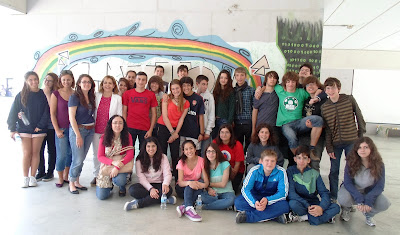The full presentation about Poland can be found under this link:
Poland - introduction
To view the file you must go to the link and press "Download" to save the file on your computer. Once you save it, you can open the file and view the presentation.
(It might not be possible to download the file from other browser than Google Chrome)
Revision:
What information from the presentation are these pictures connected to?
Questions:
1. What does „no” mean in colloquia Polish?
2. What are the elements of the Polish coat of arms?
3. What are the three biggest cities in Poland?
4. What currency do we use in Poland?
5. What happened at the end of the 18th century? (2 important events)
6. What were the “Round Table talks”, when and what was the result of it?
7. Which day is the most important for Poles during Christmas? Can you name any of the Christmas customs?
8. What do we do on Easter Monday?
9. What is primaeval forest? In which part of Poland it is?
10. What is “Żubrówka”?
11. Write the names of Polish famous people:
- astronomer:
- composer:
- 2 Nobel Prize winners (peace and physics and chemistry):
- film director:
12. Poland has once been a very large country that stretched from one sea to another. What seas were those? Which sea do we still have the access to?
Poland - introduction
To view the file you must go to the link and press "Download" to save the file on your computer. Once you save it, you can open the file and view the presentation.
(It might not be possible to download the file from other browser than Google Chrome)
Revision:
What information from the presentation are these pictures connected to?
Questions:
1. What does „no” mean in colloquia Polish?
2. What are the elements of the Polish coat of arms?
3. What are the three biggest cities in Poland?
4. What currency do we use in Poland?
5. What happened at the end of the 18th century? (2 important events)
6. What were the “Round Table talks”, when and what was the result of it?
7. Which day is the most important for Poles during Christmas? Can you name any of the Christmas customs?
8. What do we do on Easter Monday?
9. What is primaeval forest? In which part of Poland it is?
10. What is “Żubrówka”?
11. Write the names of Polish famous people:
- astronomer:
- composer:
- 2 Nobel Prize winners (peace and physics and chemistry):
- film director:
12. Poland has once been a very large country that stretched from one sea to another. What seas were those? Which sea do we still have the access to?



















